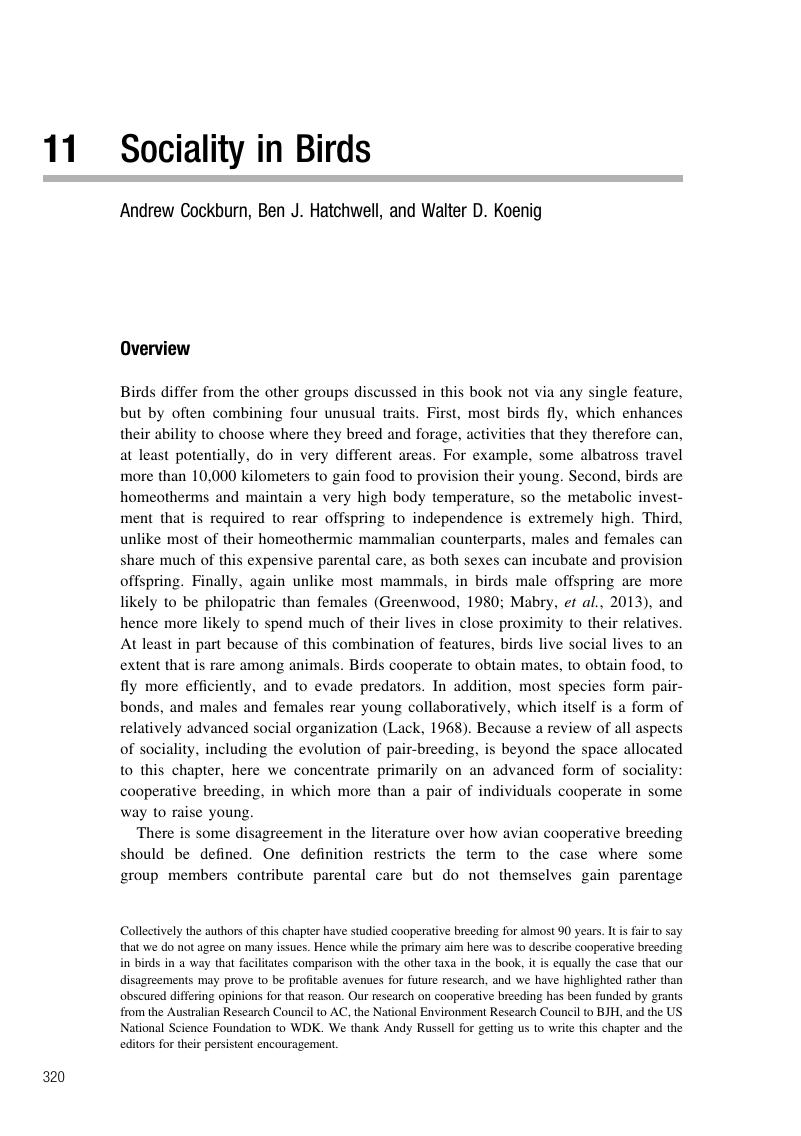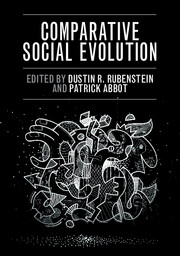Book contents
- Comparative Social Evolution
- Comparative Social Evolution
- Copyright page
- Contents
- Contributors
- Foreword
- 1 The Evolution of Social Evolution
- Part I Invertebrates
- Part II Vertebrates
- 9 Sociality in Primates
- 10 Sociality in Non-Primate Mammals
- 11 Sociality in Birds
- 12 Sociality in Fishes
- 13 Sociality in Lizards
- 14 Social Synthesis
- Glossary
- Index
- References
11 - Sociality in Birds
from Part II - Vertebrates
Published online by Cambridge University Press: 13 April 2017
- Comparative Social Evolution
- Comparative Social Evolution
- Copyright page
- Contents
- Contributors
- Foreword
- 1 The Evolution of Social Evolution
- Part I Invertebrates
- Part II Vertebrates
- 9 Sociality in Primates
- 10 Sociality in Non-Primate Mammals
- 11 Sociality in Birds
- 12 Sociality in Fishes
- 13 Sociality in Lizards
- 14 Social Synthesis
- Glossary
- Index
- References
Summary

- Type
- Chapter
- Information
- Comparative Social Evolution , pp. 320 - 353Publisher: Cambridge University PressPrint publication year: 2017
References
- 9
- Cited by



